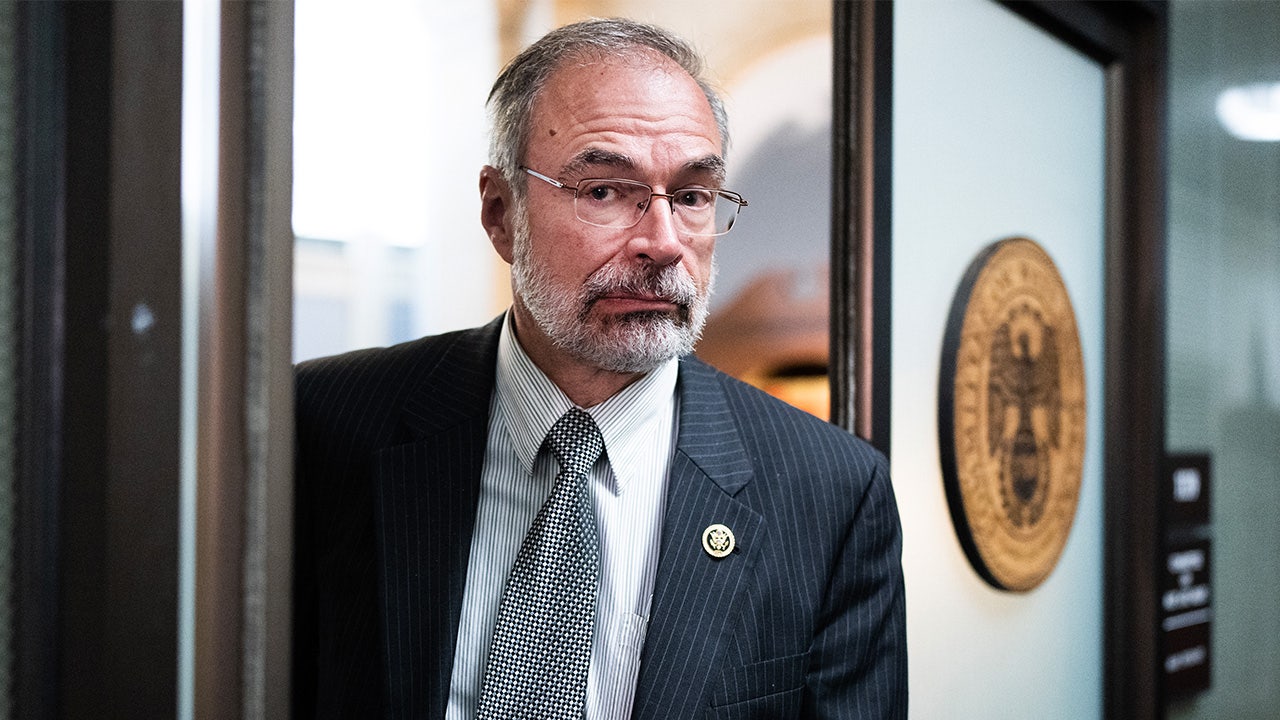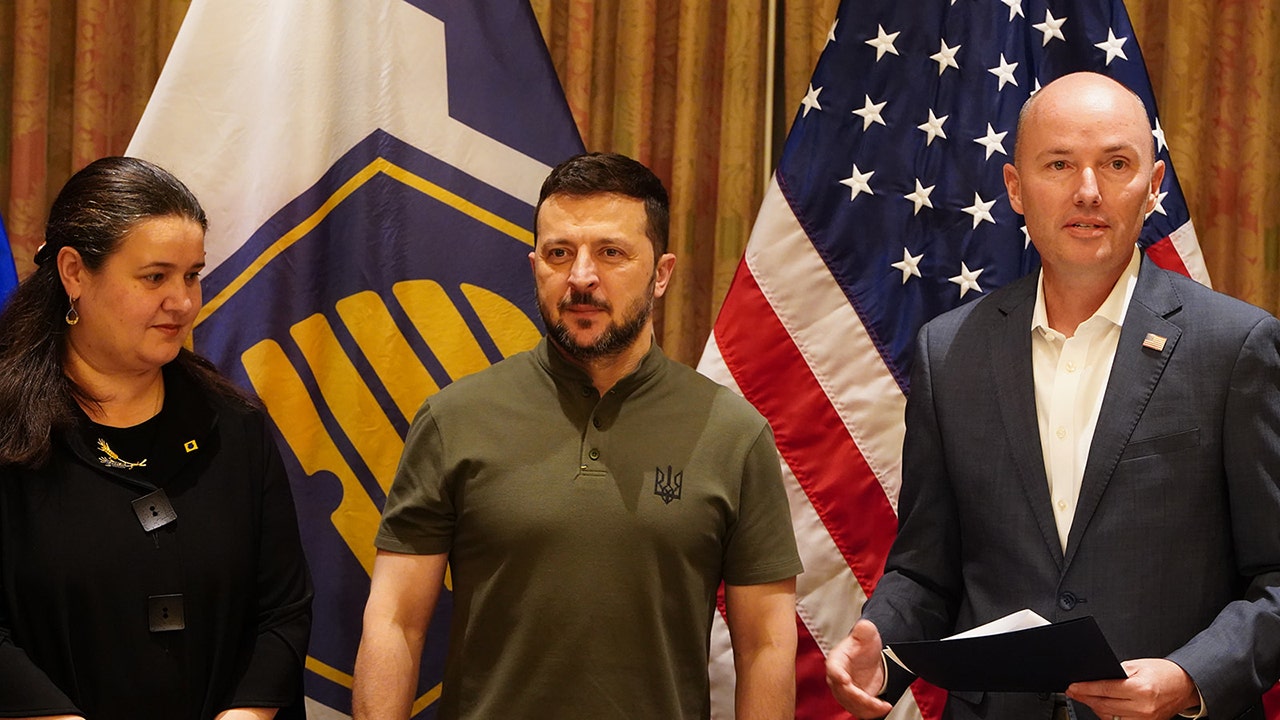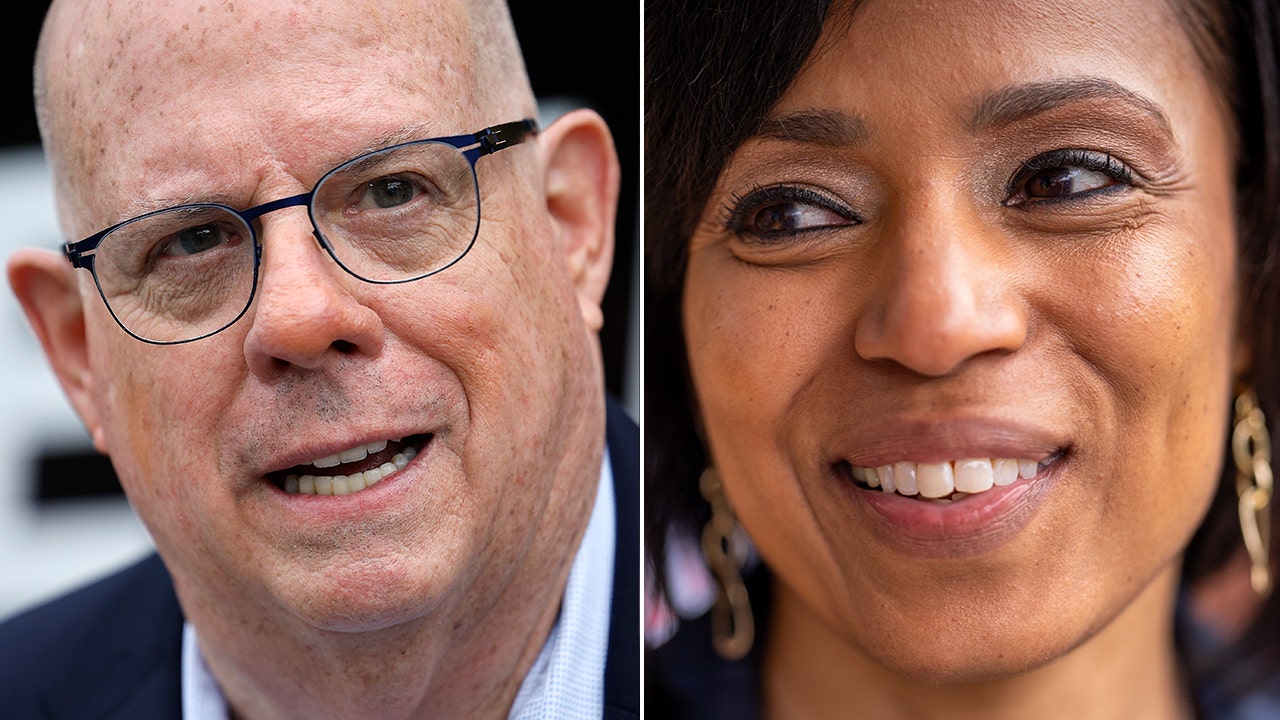Lifestyle
Whatever you’ve heard about 'Megalopolis,' see this gutsy Coppola film for yourself

Nathalie Emmanuel and Adam Driver star as Julia and Cesar in Megalopolis.
Courtesy of Lionsgate/Courtesy of Lionsgate/Courtesy of Lionsgate
hide caption
toggle caption
Courtesy of Lionsgate/Courtesy of Lionsgate/Courtesy of Lionsgate
In the early 1980s, Francis Ford Coppola, with classics like The Godfather and Apocalypse Now under his belt, set his sights on his next magnum opus: an ambitious, fable-like drama that would draw parallels between the U.S. and ancient Rome.
But after the costly flop of his 1982 musical, One From the Heart, Coppola wasn’t able to get another big-budget labor of love off the ground, and Megalopolis languished for decades. It was only a few years ago that he returned to the project, selling off part of his wine business and putting up $120 million of his own money. Even after production wrapped, setbacks continued, from challenges finding theatrical distribution to reports that Coppola had behaved inappropriately with women on the set, which the director has denied.
Now, against considerable odds, Megalopolis has arrived, and whatever you have or haven’t heard about it, I urge you to see it for yourself. You might conclude, like some of the critics at this year’s Cannes Film Festival, that Megalopolis is an unholy mess, full of disjointed plot points, didactic ideas and muddled historical allusions — an epic folly from a once-great filmmaker who long ago lost his mojo and possibly his mind. To which I can only say that every folly should have as much guts and passion as Megalopolis. I’ve seen it twice now, and both times I’ve come away dazzled by its beauty, its conviction, and its moments of brilliance.

The story takes place in a city called New Rome, which looks a lot like New York, but with Roman flourishes, from the classical architecture to the bacchanalian parties and even a Colosseum-style sports arena. The plot essentially updates a famous Roman power struggle from 63 B.C.
Adam Driver plays Cesar Catilina, an architect and designer who longs to transform New Rome into a dazzling futuristic utopia. But Cesar is challenged by the cynical mayor, Franklyn Cicero — that’s Giancarlo Esposito — who sees Cesar as a delusional dreamer. Furthering the conflict is Cicero’s daughter, Julia, a hard-partying medical-school dropout played by Nathalie Emmanuel, who asks Cesar for a job.

There’s a speechy stiffness to Coppola’s dialogue that takes some getting used to. But the story itself is a fairly straightforward mix of romance, sci-fi noir and political thriller. Cesar does hire Julia as an assistant, and they become lovers. But many complications ensue.
There’s the mystery of Cesar’s late wife, who died years ago under strange circumstances. There’s also much dysfunctional-family drama involving Cesar’s filthy-rich banker uncle, played by Jon Voight, and a ne’er-do-well cousin — that’s Shia LaBeouf. Both men have their own sinister designs on the city’s future. And in the borderline-cliché role of an unscrupulous TV reporter, Aubrey Plaza steals every scene, as Plaza usually does.

There’s more, much more: horse-drawn chariots and nightclub unicorns, Old Hollywood-style film techniques and kaleidoscopic visual effects, wild sex and startling violence. There are also references to Pygmalion, Marcus Aurelius, Sapphic poetry and Hamlet, whose “to be or not to be” soliloquy Cesar at one point performs. He’s in the throes of an existential crisis, fearful that humanity’s time may be running out.
And if Megalopolis has one subject, it’s time. The characters talk about time constantly. The trippy production design is full of clocks and sundials. Cesar has the supernatural ability to briefly freeze time in its tracks, but even he cannot halt its forward march for long. Watching the movie, I couldn’t stop thinking about Coppola, who’s now 85, and his own battle with time, including the four decades he spent trying to get Megalopolis made.
But whatever resentment Coppola may feel toward an industry that has both honored and shunned him over the years, there isn’t a trace of bitterness in the movie. Cesar believes in the future, and so does Coppola. Just because Rome fell, he seems to say, doesn’t mean the world has to. Wars can end, the planet can be saved and people can choose to live in a more inclusive and equitable society.
Most of all, Coppola clearly believes in the future of movies, and that, in a medium overrun with franchises, streaming junk and AI technology, there’s still room for a big-screen work of art as grandly improbable and deeply human as Megalopolis. Like so many of Francis Ford Coppola’s movies, it truly is one from the heart.


Lifestyle
Alessandro Michele’s Valentino Vision

Lifestyle
Video: Why Oakland Is Saying Goodbye to Pro Baseball

The Major League Baseball team the Athletics played their final games this week in the Oakland Coliseum, which has been their home base in California for the past half-century. They’re expected to relocate to Las Vegas for 2028 at the whim of their billionaire owner, John Fisher, and in the meantime play in a minor-league ballpark in Sacramento. Jack Nicas of The New York Times explains how the plan to build a stadium in Las Vegas is driven by a single factor — money — and what it’s meant to Oakland.
Lifestyle
Where to get free trees in Los Angeles and Orange counties

Once upon a time — well, in 1928, actually — the city of Los Angeles took the progressive step of opening the Commonwealth Nursery in Griffith Park, which over the next 50 years grew millions of trees and plants — many propagated from native seeds — for the city’s parks and public buildings.
The nursery closed in the mid-1970s and fell into disrepair, but now the city and its partners are trying to resurrect at least a portion of it to grow native trees for Los Angeles residents to plant for free in their yards.
For more than 50 years, Los Angeles’ historic Commonwealth Nursery in Griffith Park grew millions of plants for the city’s parks and public spaces, but the 12-acre nursery fell into disrepair after it closed in the mid-1970s, as this ruined greenhouse overrun with vines attests.
(Jeanette Marantos / Los Angeles Times)
The Commonwealth Nursery project, led by the city’s nonprofit contractor City Plants, and its staffing partner, the LA Conservation Corps, is just one piece of a much larger regional campaign by utilities and municipalities to increase the urban canopy of trees around greater Los Angeles, bringing beauty, shade and energy savings to city neighborhoods while expanding habitat for birds, insects and other wildlife.
That campaign involves planting trees in parkways and along streets. Many jurisdictions are also providing free trees to residents to plant in their yards, along with instructions and other support.

One of the old greenhouses at Commonwealth Nursery, with its roof partially caved in by a large fallen eucalyptus branch.
(Jeanette Marantos / Los Angeles Times)
The program doesn’t just beautify treeless neighborhoods, said arborist Carlos Campero, executive director of the City Plants program; it also reduces energy use. A strategically planted deciduous tree can cool a house during the hottest months, reducing air-conditioning needs, and provide warmth from the sun in the winter, when it drops its leaves, to reduce heating costs as well. City Plants offers an online tool to help residents find the best location for planting trees on their property to maximize their energy savings.
That buy-in makes all the difference in encouraging property owners to plant more trees, said Matthew Wells, public landscape manager for the city of Santa Monica, which began its tree giveaway program as an experiment in 2023.
The response was so enthusiastic, Wells said, that the city has more than doubled the number of trees it plans to give away this fall and next spring, from 150 to 400, and once again, it’s including fruit trees and smaller trees that can live on a balcony, because so many of the city’s residents are renters who live in small spaces.

City Plants’ fledgling native plant nursery fills a small corner of the Commonwealth Nursery’s terraced — and mostly unused — growing areas.
(Jeanette Marantos / Los Angeles Times)
Like other jurisdictions, Santa Monica provides lots of instructions to help ensure the trees survive. “For many people, this might be the first tree they’ve ever planted, so we want them to know how to look after it,” Wells said. “We don’t want it to be like, ‘Somebody gave me a goldfish and I killed it within a month. And I’ve never had a pet again.’”
Most jurisdictions, including the city of Los Angeles, are getting their giveaway yard trees from wholesale nurseries. But nursery manager Amanda Bashir Chaves said City Plants is trying to increase its native tree offerings by collecting seeds (with permission) from Griffith Park and other locations and then raising those plants in a small section of the Commonwealth Nursery — a project it hopes can expand with time.
The 12-acre nursery grew more than 500,000 plants the first year it opened in 1928, according to a history by the Friends of Griffith Park, and between 1 million to 2 million plants annually after that, while providing jobs for some 45 people. An acre-sized lath house provided shade for tender seedlings, and an innovative rainwater collection system provided water for irrigation six months of the year. Acres of terraced growing areas and multiple greenhouses produced many native plants grown from seed collected around the park such as sumacs, ceanothus, yellow-blooming flannel bush, manzanitas, barberries, monkeyflowers, Catalina cherry, toyon and coffeeberry.

Nursery manager Amanda Bashir Chaves holds up a native California buckeye sapling she grew from seed at the City Plants’ Commonwealth Nursery.
(Jeanette Marantos / Los Angeles Times)

LA Conservation Corps workers Gia Hernandez, in the orange vest, and Lorenzo Chavez planting Cleveland sage seeds at the Commonwealth Nursery.
(Jeanette Marantos / Los Angeles Times)
“In one planting bed alone, 75,000 coast live oaks were growing from locally collected acorns, a sight which astonished and amazed the 500 park employees who attended the nursery’s official grand opening in 1928,” according to the history.
It all came to an end after the passage of Proposition 13 in 1978, which limited property taxes to 1% of assessed values and more than halved property tax revenues overnight. “Budget cuts made supporting the facility and its staff untenable,” according to the history, “and as a result, the nursery fell into great disrepair.”
Today, the greenhouses are overgrown with leftover plants, their roofs smashed by giant fallen eucalyptus branches. It’s not clear what will happen to those ruined greenhouses, but Chaves and Campero hope their nursery can expand to grow large native shrubs like toyon and lemonade berry, as well as some of the non-invasive, non-native trees offered to residents, in the large unused terraced growing areas at the site, Chaves said.
More plants could mean more jobs for the LA Conservation Corps, which contracts with the city to grow and distribute trees under the City Plants program, Chaves said. So far, Chaves has been running the nursery herself, with the assistance of two Conservation Corps members, Lorenzo Chavez and Gia Hernandez, who help with the time-consuming work of planting seeds and separating seedlings into their own pots.
How to get a free tree
In almost all cases, you must be a customer of the utility and/or resident of the municipality. Some entities, like City Plants, offer trees throughout the year, depending on availability.
Others have giveaways timed to specific dates or events. Southern California Edison, for instance, offers free trees to some customers through a partnership with the Arbor Day Foundation’s Community Canopy and Energy-Saving Trees programs. Trees go quickly, but you can join SCE’s wait list or subscribe to the foundation’s newsletter to be informed of upcoming giveaways in other locations, said program manager Kristen Bousquet.
Some utilities, such as the Metropolitan Water District of Southern California, offer rebates on electric bills to customers who purchase trees.

The LA Conservation Corps, which contracts with City Plants to grow native trees at Commonwealth Nursery, is growing some endangered varieties as well, such as Southern California black walnut seedlings, left, and Engelmann oak seedlings.
(Jeanette Marantos / Los Angeles Times)
Note, too, that while Los Angeles County and several municipalities may not provide free yard trees — the county spends almost all of its $20 million budget for trees on trimming or otherwise maintaining its 170,000 street trees, said Deputy Director of Transportation Steve Burger — they will take requests to add trees to parkways in front of homes. If you live in a county-maintained neighborhood, you can fill out an online form to request that Los Angeles County Public Works plant a parkway tree.
If you don’t see your jurisdiction, contact your local municipality or power provider to find out if they offer a free yard tree program.
Tree giveaway programs
Anaheim TreePower Residential Program is a partnership between Anaheim Public Utilities and Anaheim Community Services that provides up to six free trees to be delivered to the homes of utilities customers, who can choose their trees from a catalog of nearly 50 species. Customers must sign a planting agreement and work with a TreePower representative to find the best location on their property for their trees. Customers may also purchase up to three 5-gallon trees from the nursery of their choice and get a $20 rebate per tree. The mature height of rebate trees cannot exceed 25 feet.
Altadena Heritage Committee is offering one free 15-gallon tree for residents who place a request by Oct. 15. Pickup is on Nov. 16. Five species are available: Western sycamore, Chinese flame tree, California pepper, pink trumpet tree and pink dawn chitalpa.
Burbank Water & Power, in partnership with the Arbor Day Foundation, provides up to three free trees for Burbank residents and 20 trees for Burbank businesses.
Glendale Water & Power Tree Power offers customers up to three free shade trees on a first-come-first-served basis (single family homes only). Customers can call the city’s arborist at (818) 957-4425 to participate or fill out a form online. Trees will be delivered with stakes, ties, arbor guards and an instructional DVD on tree planting and maintenance.
Grow Monrovia, a nonprofit community nursery and gardens on the grounds of the Maryknoll Sisters retirement home, is providing free oak saplings to residents of Foothills communities from Pasadena to Glendora on Oct. 7, 16, 21 and 28. Giveaway events start at 5 p.m. except on Oct. 16, when the event begins at 10 a.m.; events will feature presentations about the benefits of oak trees and how to care for them. Grow Monrovia offers tree giveaways and planting activities throughout the year.
Long Beach Tree Planting Program provides Long Beach residents with a free tree for their parkway area only (the strip of ground between the sidewalk and the curb). Wait times are typically two months or longer, and tree planting is paused between July and September due to the heat. Residents can request a tree from a list of nearly 50 available species.
Los Angeles City Plants provides up to seven free shade trees for city residents through this partnership between the city and the LA Conservation Corps. Residents can choose from a list of about 30 water-efficient species. City Plants offers regular tree giveaway events (sign up to be notified about upcoming events); you can also order trees online and have them delivered. Free trees are available for schools, businesses and apartment owners as well. Unsure whether you live in the city limits? Enter your address on the website to confirm eligibility. City Plants plants street trees in parkways at the request of residents or neighborhoods, but due to high demand, has temporarily paused that part of its program until it can complete earlier requests.
Los Angeles County does not provide free yard trees but does accept requests from county residents to plant street trees in the parkways in front of their homes.
Metropolitan Water District of Southern California offers rebates — applied to customer utility bills — of $100 per tree for up to five trees for customers who remove their turf lawns and plant trees as part of their new landscape plans.
Pasadena Water & Power Shade Trees Rebate offers a $25 rebate on shade trees purchased by utility customers for residential yards or businesses, and an extra $5 rebate if the trees were purchased in Pasadena. Trees must be at least 2-gallon size and be planted in the ground along the south- and/or west-facing walls of your home or business. Participants must purchase trees from the utility’s approved list of more than 30 species. Residents in the utility’s income-qualified bill payment assistance program get an additional $25 bonus per tree. Customers are limited to 10 trees every five years.
Santa Monica began a free tree giveaway for residents last year with 150 fruit and shade trees, which were quickly snatched up. This fall, winter and spring the city plans to increase its overall offerings to 400 trees, including trees that can be grown in containers, according to Public Landscape Manager Matthew Wells. Tree varieties include Eureka lemon, pink guava, Golden Delicious apple, coast live oak, olive, crape myrtle, California sycamore, desert willow and torrey pines. For giveaway details, follow Santa Monica on Instagram or visit the city’s events page.
Torrance residents can request that the city plant a street tree in the parkway in front of their home. The city plants an average of 400 street trees a year in its parkways, according to the website.
TreePeople is working with multiple jurisdictions in Los Angeles, Riverside and San Bernardino counties to plant more trees, and periodically offers free tree giveaways to residents of those communities, such as the 200 fruit trees it is offering Pacoima residents from 8 a.m. to 4 p.m. Oct. 12 at El Nido Farmer’s Market. Check TreePeople’s calendar or sign up for a newsletter to find out about upcoming events.
-

 News1 week ago
News1 week agoSecret Service Told Trump It Needs to Bolster Security if He Keeps Golfing
-

 Business1 week ago
Business1 week agoU.S. Steel C.E.O. Says Nippon Deal Will Strengthen National Security
-

 Politics1 week ago
Politics1 week agoNew House Freedom Caucus chair reveals GOP rebel group's next 'big fight'
-

 News1 week ago
News1 week agoToplines: September 2024 Inquirer/Times/Siena Poll of Pennsylvania Registered Voters
-

 News1 week ago
News1 week agoDisney trips meant for homeless NYC students went to school employees' families
-

 Politics1 week ago
Politics1 week agoBiden admin moves to reinstate Trump-era rule, delist gray wolves from endangered species list
-

 Politics7 days ago
Politics7 days agoDem lawmakers push bill to restore funding to UN agency with alleged ties to Hamas: 'So necessary'
-

 World1 week ago
World1 week agoWhat’s South Africa’s new school language law and why is it controversial?













